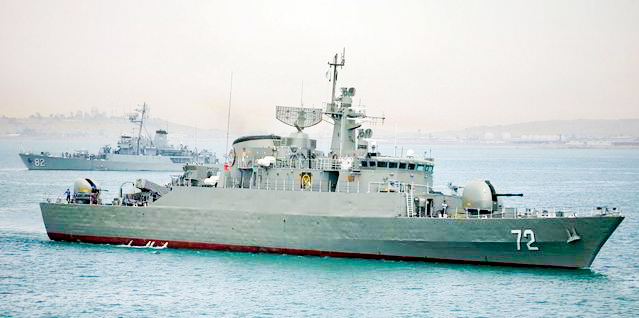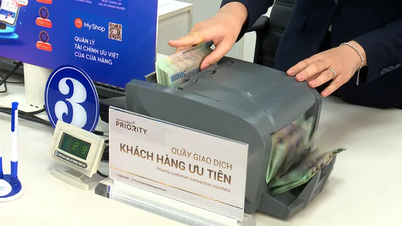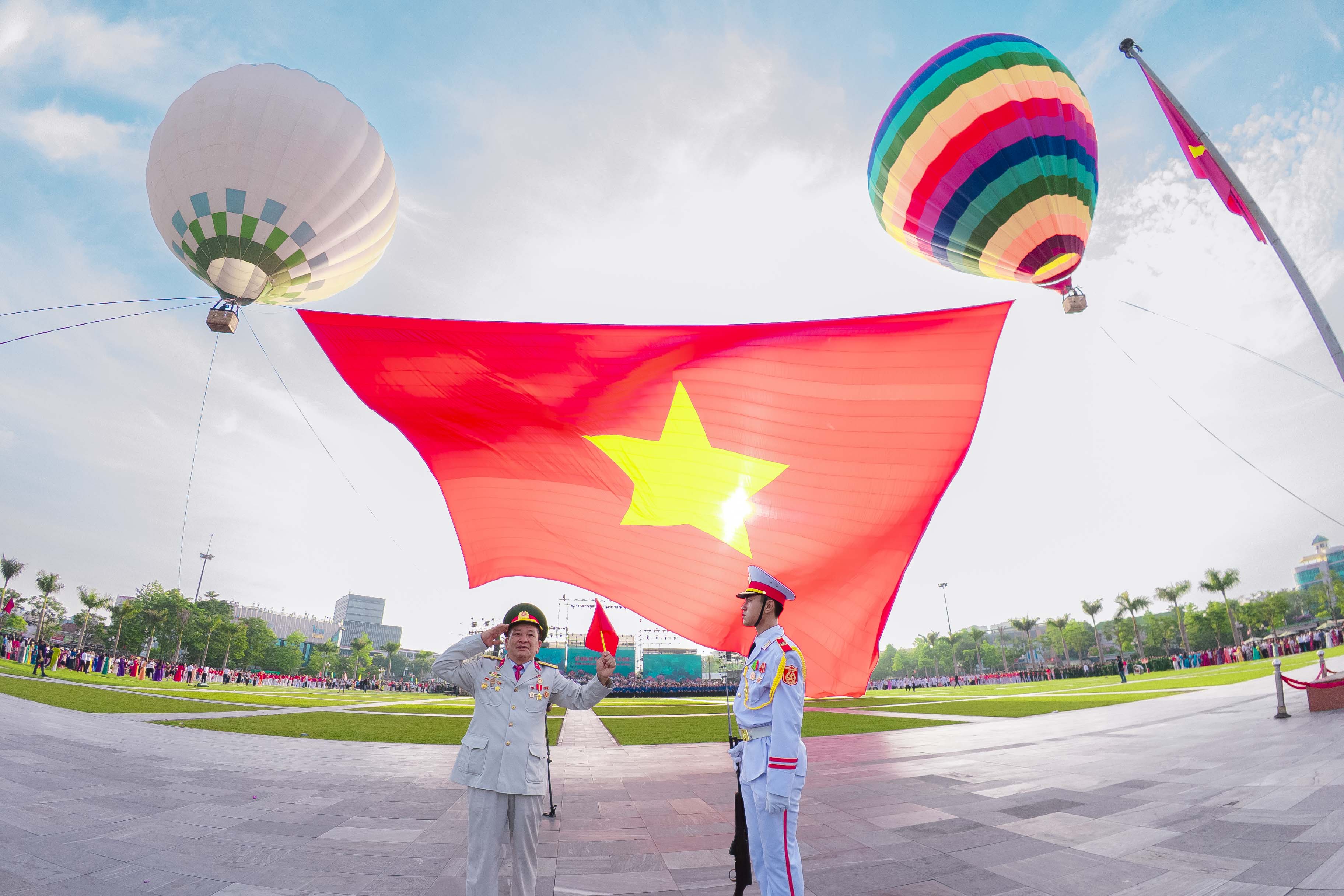TRI VAN (Synthesis)
Iran, Saudi Arabia, the United Arab Emirates (UAE) and Oman are reportedly forming a joint naval force to ensure security in the Persian Gulf, with China playing a supporting role in the dialogues taking place between the four countries to ensure maritime security in the region, Qatar’s Al-Jadid newspaper reported.
Iranian Navy ships patrol near the Strait of Hormuz. Photo: AFP
Analysts say the formation of a joint naval force between Iran, Saudi Arabia, the UAE and Oman may reflect a statement by the commander of the Islamic Revolutionary Guard Corps Navy, Alireza Tangsiri, who said that “the security of the Persian Gulf can be ensured by Iran and the countries in the region without the presence of the United States or any other country.” In addition to the four countries mentioned above, Mr. Tangsiri said Bahrain, Qatar, Iraq, India and Pakistan could join the Gulf naval force.
Gerard Filitti, a senior adviser at the US-based nonprofit The Lawfare Project and an expert on national security and counterterrorism, told the National Review that the joint Gulf naval force could be tasked solely with stopping piracy and drug trafficking in the region. However, “if it is a defensive naval force, it could be designed to embarrass the United States, and even President Joe Biden,” Filitti said, adding that China could have bigger interests in the Middle East.
The announcement came shortly after the UAE withdrew from the 34-nation US-led Combined Maritime Force (CMF) operating in the Red Sea and Persian Gulf without any formal notice to Washington. According to a statement from the UAE Ministry of Foreign Affairs on May 31, the UAE withdrew from the CMF due to assessments of the effectiveness of security cooperation with all partners. However, Bilal Saab, director of the Defense and Security Program at the Middle East Institute, said: “Abu Dhabi is clearly unhappy with the US. So this is their way of sending a message to the US about their dissatisfaction. In my opinion, this is purely political .”
According to the National Review, the UAE's move comes after Iran seized several oil tankers in the region and may stem from a sense that the US cannot protect its Gulf allies from Iranian attacks. According to Tim Hawkins, a spokesman for the US 5th Fleet based in Bahrain, in the past two years alone, Iran has attacked or seized 15 international-flagged merchant ships. The event also comes after diplomatic relations between Saudi Arabia and Iran showed signs of a "thaw".
The idea of a joint naval force in the region is not new. The Persian Gulf states discussed the possibility of a joint naval force in October 2014 to secure oil supplies to the West. With the Bab el-Mandeb Strait, which connects the Gulf of Aden to the Mediterranean, at risk of being blocked by Shiite militants in Yemen, a joint naval force would also strengthen control over the oil export route in the Strait of Hormuz, through which about 17 million barrels of oil pass daily. Iran has previously threatened Saudi Arabia and its allies with a blockade of the strait, which supplies about 20 percent of the world ’s crude oil.
In March, Iran and Saudi Arabia ended seven years of hostility in a China-brokered deal that marked China’s presence in the Middle East and bolstered Beijing’s strategic interests in the Gulf, a region traditionally dominated by the United States. The Iran-Saudi peace deal has many benefits for the region, and for Iran, it is expected to pave the way for further agreements with other Arab states in the Middle East.
Source link



























































































![[OCOP REVIEW] Tu Duyen Syrup - The essence of herbs from the mountains and forests of Nhu Thanh](https://vphoto.vietnam.vn/thumb/402x226/vietnam/resource/IMAGE/2025/6/5/58ca32fce4ec44039e444fbfae7e75ec)






Comment (0)